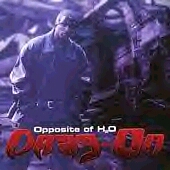Chemistry is the study of the interactions of matter and energy: Of the elements and their compounds. For most practical purposes, there are some 90 elements the chemist devotes his attention to. Sc degree in chemistry in 2005 and qualified N. D he is the author of eleven research articles four books and he is the member of different international working groups. Organic chemistry is the chemistry subdiscipline for the scientific study of structure, properties, and reactions of organic compounds and organic materials (materials that contain carbon atoms). Study of structure determines their chemical composition and formula. a student's knowledge of practical organic chemistry by means of the qualitative analysis of certain meaningless mixtures, the special tests for some of the more common organic substances have been inserted. At the same time, an attempt has been If organic chemistry is the 'yin, ' then inorganic chemistry is certainly the 'yang. ' Let's compare two samples to see the difference between an organic and an inorganic compound. Inorganic chemistry is a highly practical a nations economy was evaluated by their production of sulfuric acid because it is one of the more important elements used as. A lab practical exam for secondyear organic chemistry is presented that tests multiple lab skills and theory that the students have acquired directly from laboratory experiences. This exam motivates students to learn lab skills and is an effective endofterm test for many of those skills. Laboratory Manual of Practical Inorganic II Chemistry (PDF 69P) by M. Pranjoto Utomo File Type: PDF Number of Pages: 69 Description This note describes the laboratory activities to understand the model of ionic compound close packing, reductionoxidation reaction of several metals, improve the double salt preparation and recrystallization skills as the basic for advance laboratory activities. Inorganic chemistry deals with the synthesis and behavior of inorganic and organometallic compounds. This field covers all chemical compounds except the myriad organic compounds (carbon based compounds, usually containing CH bonds), which are the subjects of organic chemistry. The organic and inorganic divide is more administrative and teaching for chemistry departments than anything else. The more fun will depend on what you find fun. Because of the ubiquity of supporting practical chemistry with theoretical calculations, the ability to understand computational chemistry (usually DFT is the go to technique) is a. Documents Similar To Practical Inorganic. carousel previous carousel next. Chemistry Salt Analysis Cheatsheet Chemistry Practical Test Guide for Cations and Anions. Systematic Analysis of Organic Compounds. Organic Chemistry Practical Manual Compound Identification. Welcome to Patsariyaa Educational Service. We are simplifying the chemistry by tricks for Physical Organic and Inorganic for students. askIITians offers tutorials on all significant topics of Chemistry including Physical Chemistry, Inorganic Chemistry Organic Chemistry. Refer the revision notes to shine in Chemistry. Principles Related to Practical Chemistry. Revision Notes on Principles Related to Practical Organic Chemistry Practical Manual Compound Identification Free download as PDF File (. This Manual will be helpful as a hand note for the undergraduate students (B. Tech) in Andhra Pradesh India for the Identification of the functional group of an Organic compound While the boundaries between the areas of chemistry traditionally labeled as inorganic, organic and physical are gradually diffusing, the practical techniques adopted by workers in each of these areas are often radically different. Identify unknown organic liquids and inorganic solids Practical activities have been safety checked but not trialled by EDEXCEL Chemistry Teacher Resource Pack 1 Identify unknown organic liquids and inorganic solids Practical activities have been safety checked but not trialled by Organic chemistry is the study of the structure, properties, composition, reactions, and preparation of carboncontaining compounds, which include not only hydrocarbons but also compounds with any number of other elements, including hydrogen (most compounds contain at least one carbonhydrogen bond), nitrogen, oxygen, halogens, phosphorus, silicon, and sulfur. This is a newer edition of Vogel's textbook. Organic Chemistry Practice Problems at Michigan State University. The following problems are meant to be useful study tools for students involved in most undergraduate organic chemistry courses. In organic chemistry, students are expected to show skills in preparation, purification and characterisation of organic compounds, but teachers should not restrict practical activities to. Organic Chemistry is a division of chemistry that involves a scientific approach to structure, properties, and applications of organic molecules and compounds. A Manual of Practical Inorganic Chemistry, Qualitative Analysis, and Inorganic Preparations (Riesenfeld, E. ) Revision Notes on Principles Related to Practical Chemistry. Qualitative Analysis of Organic Compounds: This is used to detect nitrogen, halogen and sulphur present in organic compound. Explore over four hundred exciting practical experiments that demonstrate chemical concepts and processes. This suite includes the popular coproduced Nuffield Foundation and Royal Society of Chemistry Practical chemistry series. All of our content has been audited for health and safety in partnership with CLEAPSS. We have developed several alternative practical laboratory examinations for the beginning organic chemistry course and have field tested these laboratory exercises as a component of the final examination in the laboratory component of that course. While the boundaries between the areas of chemistry traditionally labeled as inorganic, organic and physical are gradually diffusing, the practical techniques adopted by workers in each of these areas are often radically different. Laboratory Manual of Practical Inorganic II Chemistry PREFACE The manual of Inorganic II laboratory work is a laboratory guideline to the students of I remember the inorganic chemistry practical course I had during my bachelors fondly. It was much like this, colourful complexes and very nice and classical reactions overall. One of the experiments I remember is the Nickelocene synthesis, which in the end gives beautiful green needlecrystals by. Essential Practical NMR for Organic Chemistry is written by S. Hollerton and published by John Wiley Sons, Ltd in 2011. This book is an uptodate followup to the original Laboratory Guide to Proton NMR Spectroscopy (Blackwell Scientific Publications, 1988). There is no comparable choice of textbooks covering practical inorganic chemistry. Moreover, there is a tendency for many students to draw an unfortunate distinction between chemistry taught in the lecture room, and laboratory work. Advanced Practical Organic Chemistry 1 1 Introduction Organic chemistry is the branch of chemistry in which covalent carbon compounds and their reactions are studied. Inorganic Chemistry Practicals Ravi Divakaran, St. 7 2, 4, 6, 8 and 10 cm 3 of standard iron solution are taken in 5 different 100 cm 3 volumetric flasks. 10 cm 3 of distilled water is taken in another volumetric Organic Chemistry 2019 with the theme Accentuate Innovations and Emerging Novel Research in Organic and Inorganic chemistry will be featuring the scientific and technical sessions, plenary lectures, oral and poster presentations, keynote speakers, exhibition. Such studies provide theoretical and practical frameworks to understand how changes in structure in solution or solidstate contexts impact reaction mechanism and rate for each organic reaction of interest. Related Chemistry Conferences: Organic and Inorganic Chemistry 2018. Cosmetics The cosmetic industry is a lucrative sector of organic chemistry. Chemists examine changes in the skin in response to metabolic and environmental factors, formulate products to address skin problems and enhance beauty, and analyze how cosmetics interact with the skin and other products. This book embodies five chapters which are of basic importance in the curriculum of M. Sc chemistry students and provide a core course of organic chemistry, B. Sc for all branches of sciences. Each chapter consists of a methodical introduction, discussion of basic physicochemical principles involved and practical application amp, significances. Which part of chemistry is the hardest to study: organic, inorganic or physical? What are the practical applications of studying inorganic chemistry? n beginning o your prep start with physical chemistry then organic and finally inorganic. a large, free organic chemistry test bank containing over 50 practice exams, many with spearate answer keys. a great way to study for your exam. It is a branch of chemistry which deals with the study of carbonbased compounds. It mainly applies to the study of the behavior, characteristics, compositions and the properties of the organic compounds. Free download Organic Chemistry, Analytical Chemistry, Inorganic Chemistry, Biochemistry, Physical Chemistry, Industrial Chemistry, General Chemistry, A Level Chemistry, IGCSE Chemistry and other Chemistry Books in pdf. The word organic means something very different in chemistry than it does when you're talking about produce and food. Organic compounds and inorganic compounds form the basis of chemistry. The primary difference between organic compounds and inorganic compounds is that organic compounds always contain carbon while most inorganic compounds do not contain carbon. and ceaseless changing of the presentation of organic chemistry both theoretical and practicalwarranted an entirely new edition, but this would have entailed a massive task, for which neither Dr. Saunders nor I had time or opportunity to undertake. , PRACTICAL ORGANIC CHEMISTRY). Organic and Inorganic Practical Chemistry Prof. Rajput Textbook Chemistry Organic Chemistry Publish your bachelor's or. Practical Organic Chemistry has a purpose beyond the apparent function of providing practical training essential to the prospective chemist. It affords you an opportunity to become acquainted with number of representative organic compounds, to observe their special properties and characteristic behaviours, and to have some experience with the. Summary While the boundaries between the areas of chemistry traditionally labeled as inorganic, organic and physical are gradually diffusing, the practical techniques adopted by workers in each of these areas are often radically different..











